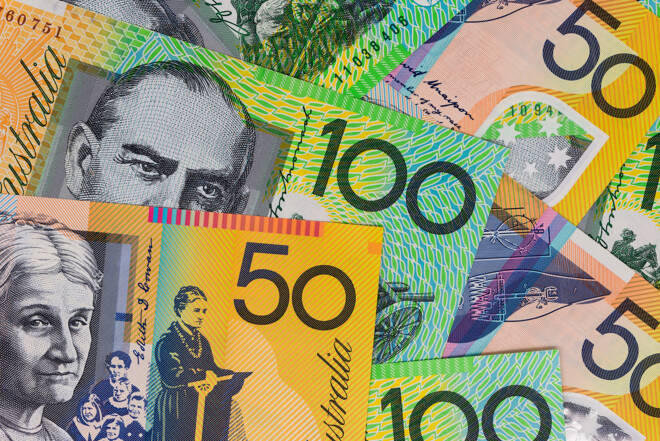Advertisement
Advertisement
AUD to USD Forecast: RBA’s Hawkish Tone and PBoC Influence
By:
RBA's hawkish stance and PBoC's policy decisions are driving speculations, while the Fed's rate outlook adds intrigue to currency markets.
Highlights
- The AUD/USD rallied 0.71% on Friday, ending the session at $0.65136.
- On Monday, the PBoC will be in focus, with economists expecting the PBoC to leave Loan Prime Rates unchanged.
- Central bank speeches need monitoring before the RBA and Fed meeting minutes.
Friday Overview of the AUD/USD
The AUD/USD rallied 0.71% on Friday. After a 0.63% decline on Thursday, the Aussie dollar ended the day at $0.65136. The Aussie dollar fell to a low of $0.64524 before rising to a high of $0.65157.
RBA Meeting Minutes and the PBOC
Recent Australian wage growth and employment figures fueled bets on a more hawkish RBA rate path. The markets raised bets on an RBA rate hike despite the global macroeconomic backdrop. On Tuesday, the RBA meeting minutes could reveal board member thoughts about the global economy and domestic private consumption.
The influence of the RBA meeting minutes could be more material than usual. In contrast to the RBA, the markets are raising bets on the Fed ending its rate hike cycle and a May rate cut.
Considering the macroeconomic backdrop, the PBoC and comments from Beijing also need monitoring. The PBoC will set Loan Prime Rates (LPRs) this morning, with economists expecting the PBoC to leave the LPRs unchanged. An unexpected cut to the LPR rates could support the appetite for the Aussie dollar.
China accounts for one-third of Australian exports. Looser policy would support demand, the Australian economy, and the Aussie dollar. The Australian trade-to-GDP ratio is over 50%, reflecting the influence of demand from China on the Australian economy.
However, concerns over the Chinese property sector linger. On Friday, China pledged support for the real estate sector. Convincing policy measures would be a boon for the Aussie dollar. China’s real estate sector contributes around 30% to the Chinese economy and influences trade terms with Australia.
Fed Speakers in Focus Before the Fed Minutes
On Monday, investors must monitor Fed speakers. After the recent inflation and retail sales numbers, the markets are betting on a May Fed rate cut. Affirmation from Fed speakers of a shift in policy intentions to avoid a hard landing could fuel demand for the AUD/USD.
There are no US economic indicators for investors to consider on Monday. Fed speakers could move the dial ahead of FOMC meeting minutes on Tuesday.
Short-Term Forecast
Recent Australian and US inflation figures tilted monetary policy divergence toward the Aussie dollar. The respective RBA and Fed meeting minutes and central bank speeches could dictate near-term trends. Hawkish RBA rhetoric and dovish Fed speakers could support an Australian dollar move toward $0.67.
AUD/USD Price Action
Daily Chart
The AUD/USD remained above the 50-day EMA while holding below the 200-day, affirming bullish near-term but bearish longer-term price signals.
An AUD/USD break above $0.65220 would support a move to the 200-day EMA and the trend line. $0.65220 has been a frequent resistance level in recent months.
The PBoC, Beijing, and central bank speeches will be focal points.
However, a drop below the $0.64900 support level would bring the 50-day EMA into play.
A 14-period Daily RSI reading of 60.03 indicates a move to the 200-day EMA before entering overbought territory (typically above 70 on the RSI scale).
4-Hourly Chart
The AUD/USD holds above the 50-day and 200-day EMAs, reaffirming bullish near-term price signals.
An AUD/USD move through $0.65220 would bring the trend line and the $0.66 handle into play.
However, a fall through the $0.64900 support level would give the bears a run at the 50-day EMA.
The 14-period 4-Hourly RSI at 63.52 suggests an AUD/USD move to $0.65500 before entering overbought territory.
About the Author
Bob Masonauthor
With over 28 years of experience in the financial industry, Bob has worked with various global rating agencies and multinational banks. Currently he is covering currencies, commodities, alternative asset classes and global equities, focusing mostly on European and Asian markets.
Advertisement
